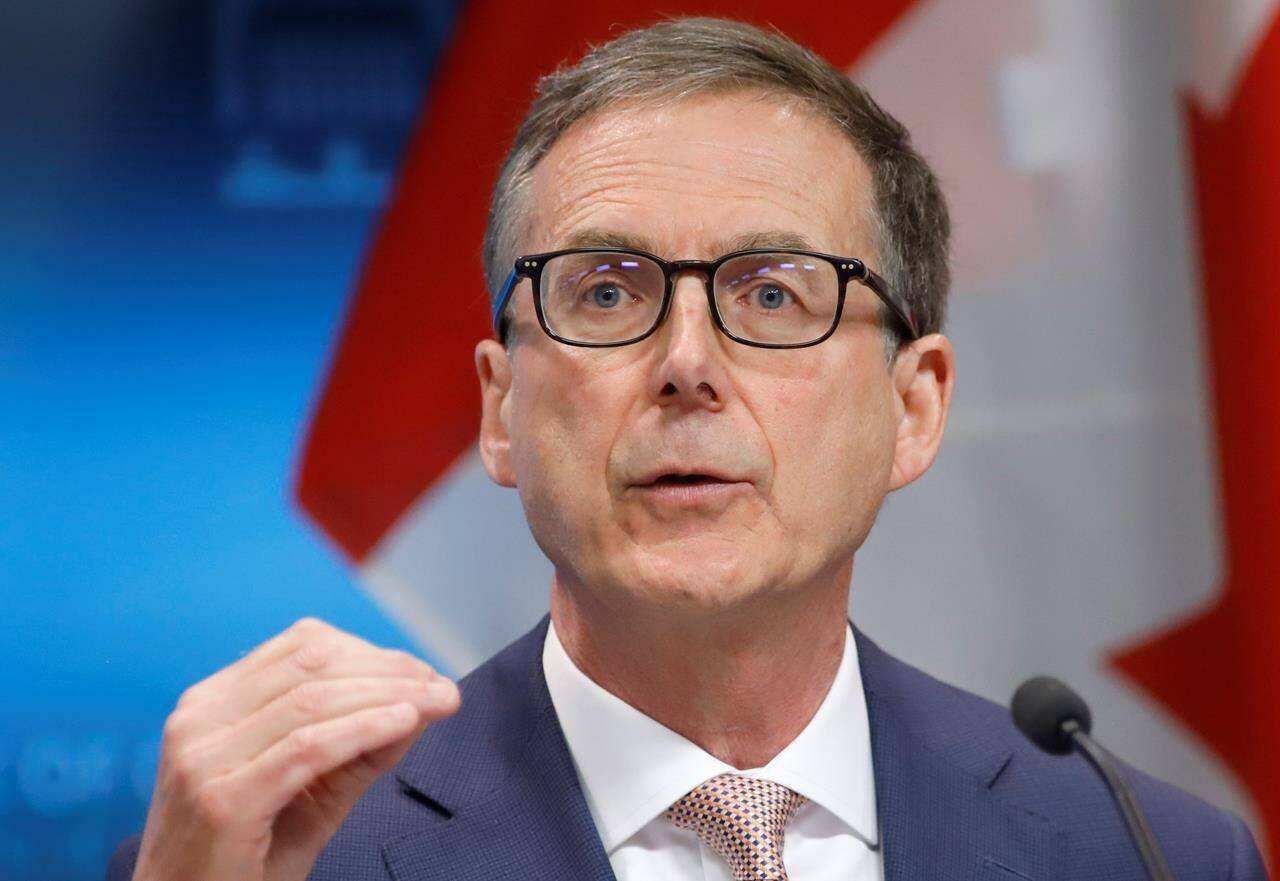The Bank of Canada raised its key interest rate by a full percentage point on Wednesday, marking the largest single rate hike since August 1998.
The central bank’s decision signalled a more aggressive approach to bringing skyrocketing inflation, which hit a 39-year-high of 7.7 per cent in May, back down to its target of two per cent.
In its latest monetary policy report, the Bank of Canada said inflation in Canada is “largely the result of international factors,” but that “domestic demand pressures are becoming more prominent.”
Most economists had forecasted a rate hike of three-quarters of a percentage point.
Tu Nguyen, an economist with accounting and consulting firm RSM Canada, said that while the rate announcement may have come as a surprise, it isn’t unreasonable given the rate of inflation, rising inflation expectations and the tight labour market.
“As unsettling as this news is for consumers and businesses alike, an economy-wide recession is still unlikely in 2022,” said Nguyen, adding that economic indicators still point to a healthy economy.
After raising interest rates by half a percentage point in June, Bank of Canada governor Tiff Macklem said the central bank “may need to move more quickly” to bring inflation down.
The rate hike Wednesday brings the Bank of Canada’s target for the overnight rate to 2.5 per cent and is expected to prompt the commercial banks to raise their prime rates which will increase the cost of loans linked to the benchmark such as variable rate mortgages and home equity lines of credit.
In a note, CIBC senior economist Karyne Charbonneau said the Bank of Canada raising its key rate to a peak of 3.25 per cent is now more likely.
“With the Bank of Canada qualifying this larger step than anticipated as ‘front-loading,’ we still believe they could stop at three per cent, but the risks that the peak reaches 3.25 per cent have increased,” Charbonneau said.
The central bank said the largest drivers of global inflation are the Russian invasion of Ukraine and ongoing supply disruptions, leading to higher global energy and food prices.
Inflation in the U.S. soared to a new four-decade peak in June. Consumer prices rose 9.1 per cent compared with a year earlier, the government said on Wednesday.
Statistics Canada is expected to release Canada’s inflation data for June on July 20.
Domestically, the Bank of Canada said “further excess demand has built up,” citing tight labour markets and strong demand.
That excess demand is allowing businesses to pass more of their cost increases on to consumers, the bank said.
The unemployment rate fell to a record-low of 4.9 per cent in June as businesses continue to struggle with an ongoing labour shortage.
The central bank is also citing concerns about rising inflation expectations among consumers and businesses. Economists generally worry when people begin expecting high inflation, as those expectations then feed into future prices set by business and wage negotiations.
“The bank is guarding against the risk that high inflation becomes entrenched because if it does, restoring price stability will require even higher interest rates, leading to a weaker economy,” said the central bank.
In its forecast, the Bank of Canada expects GDP growth to begin to slow this year, growing by 1.75 per cent in 2023 and 2.5 per cent in 2024.
It’s also forecasting inflation will remain at eight per cent over the next few months and begin to decline toward the end of the year and reach its target rate in 2024.
The central bank’s projections assume that globally, oil prices will gradually decrease, and supply chain disruptions will ease.
“The governing council continues to judge that interest rates will need to rise further,” the Bank of Canada said in its decision, adding that the pace of these rate hikes will depend on the central bank’s assessment of the economy and inflation.
Macklem, who recently recovered from COVID-19, will hold a video news conference on Wednesday morning.
RELATED: Economists expect Bank of Canada to hike key interest rate by 0.75% on Wednesday
RELATED: Worry about stagflation, a flashback to ’70s, begins to grow

